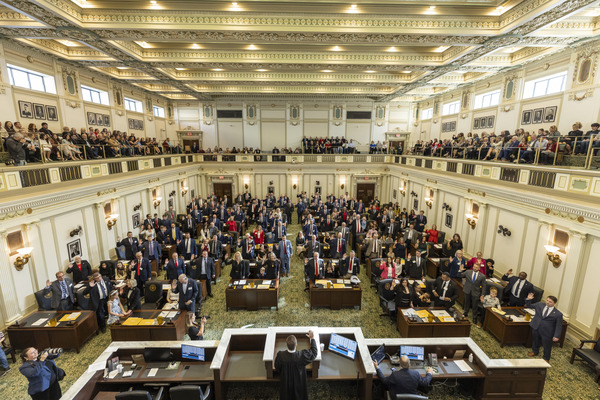Pictured: Gov. Leon Phillips
OKLAHOMA HISTORY: Gov. Phillips - The First Republican Governor?
By Steve Byas
Governor Leon Phillips is a good illustration of the divisions within the Oklahoma Democratic Party that eventually led to the end of its dominance in Oklahoma. When Oklahoma became a state in 1907, the majority of its population tended Democrat – southern Oklahoma was made up largely of families that had emigrated to the state from southern states that were heavily Democrat. The same could be said for northeastern Oklahoma as well, with only north-central and northwestern Oklahoma having much Republican influence from Kansas.In fact, other than the 1920 elections, it would be several decades before the Republicans won a majority in the Oklahoma House, and the state would not elect a Republican governor until 1962.
Still, it was well-recognized that the Oklahoma Democratic Party was never all that united, with two “wings” existing through its years of dominance. After all, running statewide as a Republican was an uphill battle, to say the least.
One of those Democrats who did not care for the increasingly liberal drift of the Democratic Party was Governor Leon Phillips, elected in 1938. The speaker of the Oklahoma House, Phillips defeated former governors John Walton and Bill Murray, along with six others for the Democratic nomination. At the time, winning the Democratic nomination for governor was tantamount to election.
Born in Missouri, Phillips attended Oklahoma City University, largely because it was a Methodist school at the time, but then transferred to OU, where he was on the football team, and served as president of the student council. He then attended law school, and practiced law in Okemah.
Phillips served in World War I, where he survived a bad bout with the Spanish Flu.
Once in office, Phillips had to deal with a state budget that was badly out of balance during the Depression years. To solve this problem, he pushed through increased taxes on gasoline and tobacco, and slashed spending across the board. He also is mostly responsible for the Balanced Budget Amendment, which the voters approved by a 2-1 margin. He also argued that education funding should be taken over at the local level.
In 1940, he opposed President Franklin Roosevelt running for a third term, which led to increasing friction with the Roosevelt Administration. He opposed a huge federal flood control and hydroelectric project on the Red River, arguing that the Denison Dam would take 100,000 acres of rich farmland off the tax rolls. He won in the Supreme Court in February 1941, arguing that the landowners were not being justly compensated, as required by the 5th Amendment, but the federal government took the land anyway in December 1941 for “national defense purposes.”
After supporting Republican Ed Moore for the U.S. Senate in 1942 (Moore won), state Democrats “read him out of the party.” Phillips joined the Republican Party in 1943, and practiced law until his death in 1958. He is buried at Hillcrest Cemetery in Weleetka.
While some tend to think that Oklahoma’s shift away from the Democratic Party was a purely 1960s event, the truth is that Oklahoma’s move to the Republican Party can find at least some of its origins in the New Deal years of President Roosevelt.
Steve Byas teaches history at Randall University in Moore, Oklahoma.










Latest Commentary
Thursday 1st of May 2025
Thursday 1st of May 2025
Thursday 1st of May 2025
Thursday 1st of May 2025
Thursday 1st of May 2025
Thursday 1st of May 2025
Thursday 1st of May 2025
Thursday 1st of May 2025
Thursday 1st of May 2025